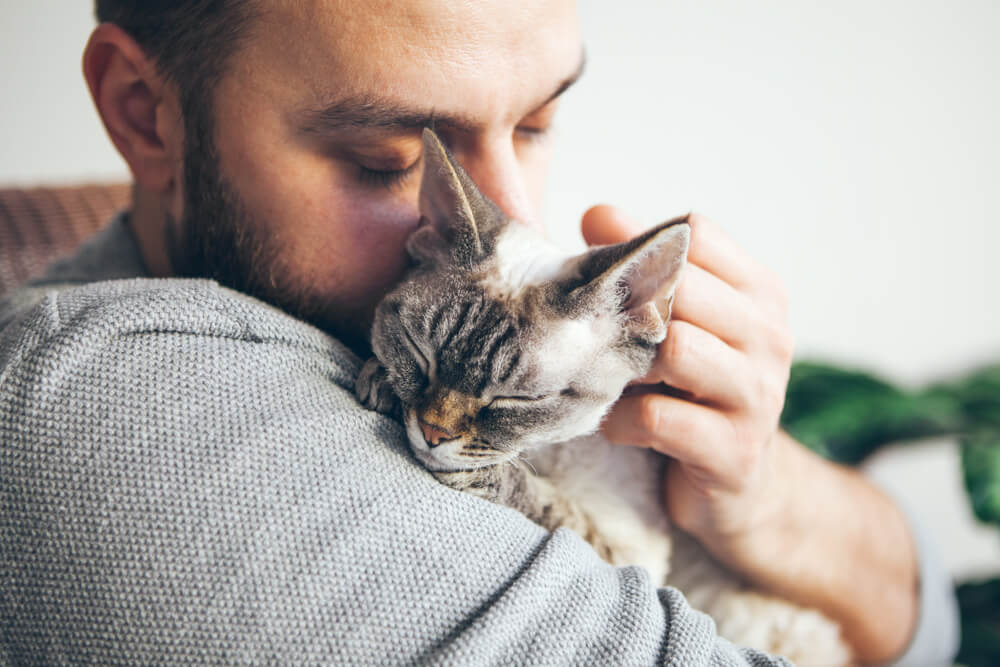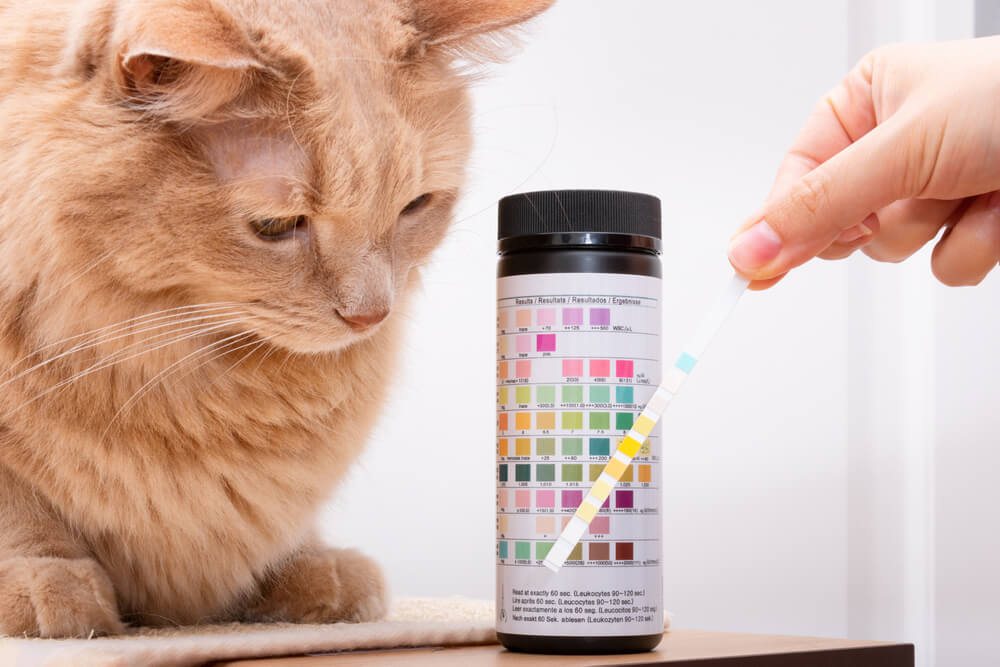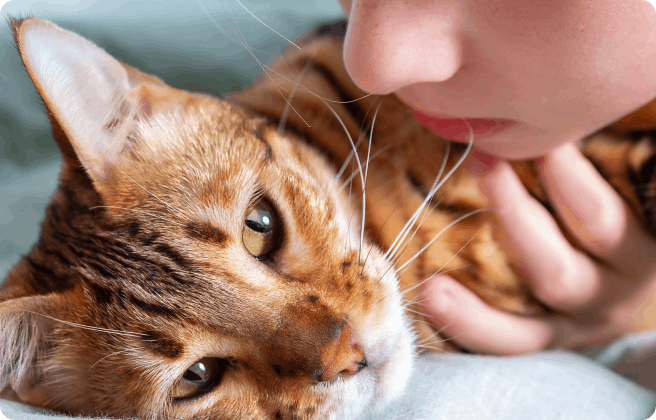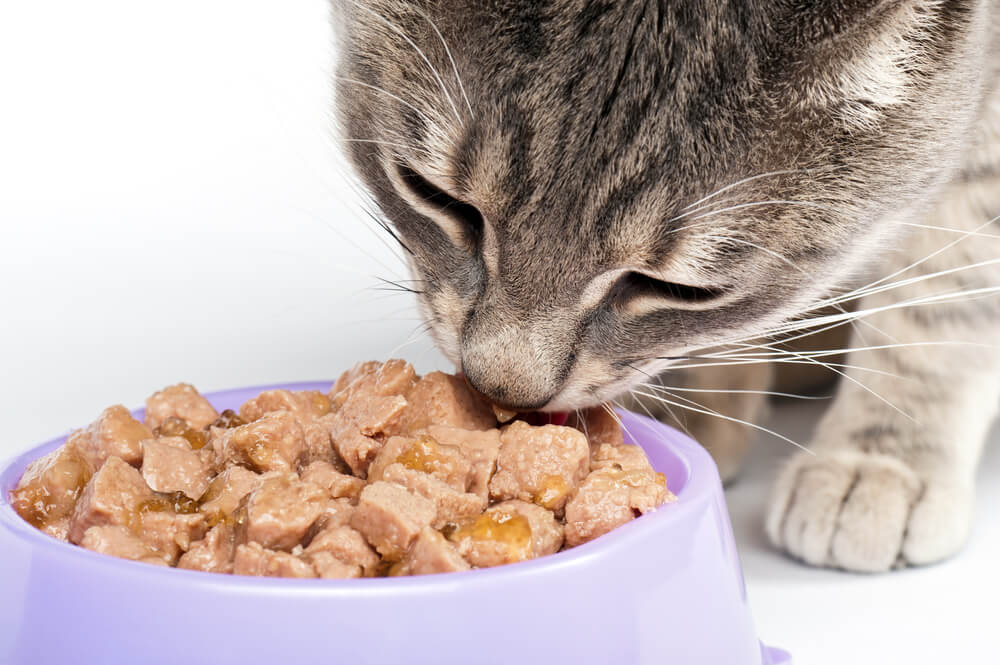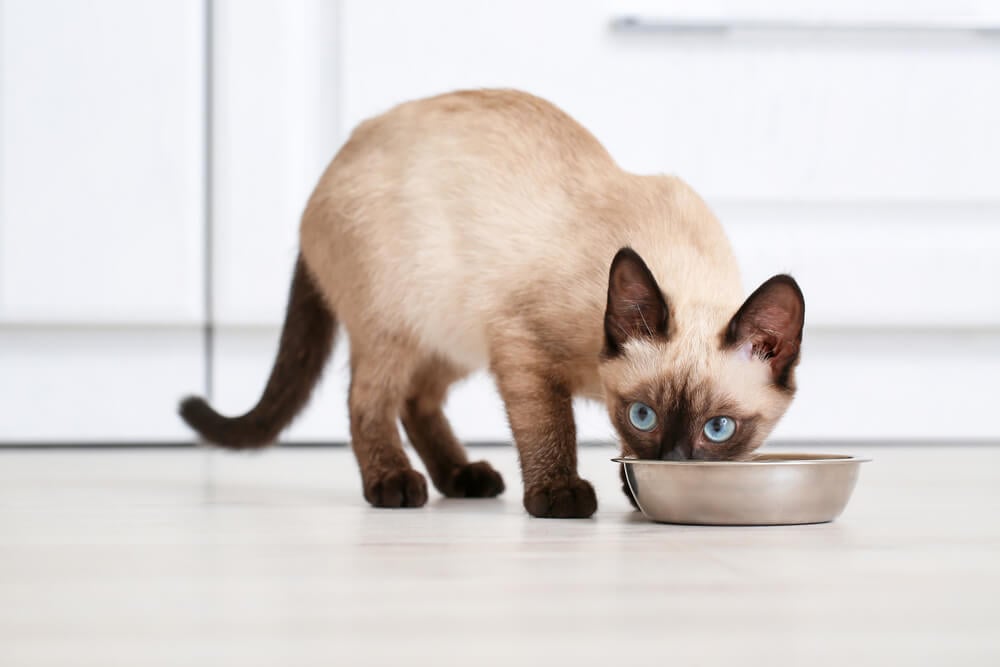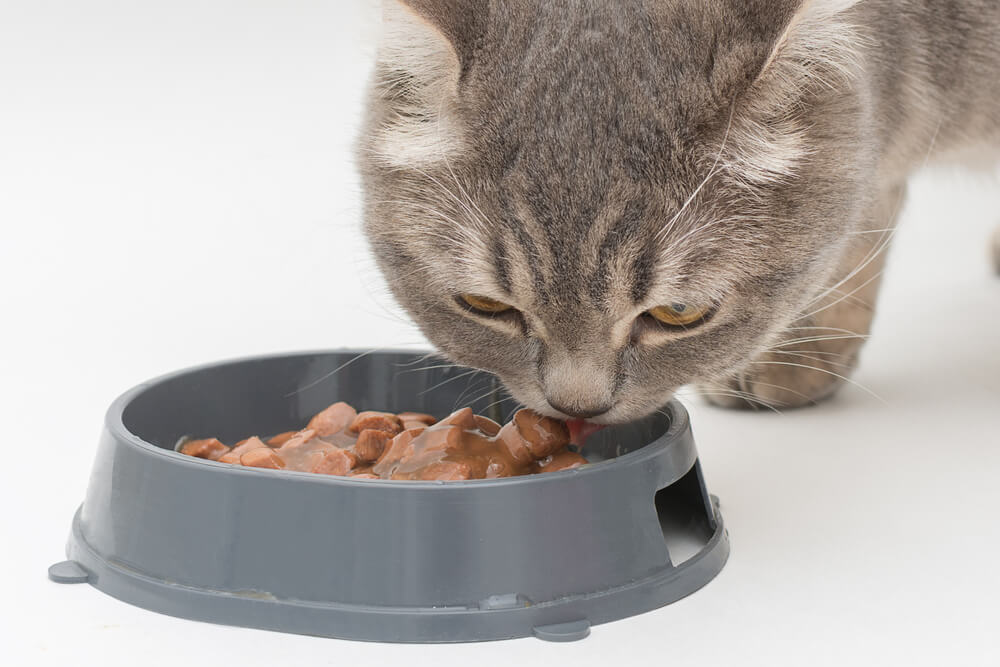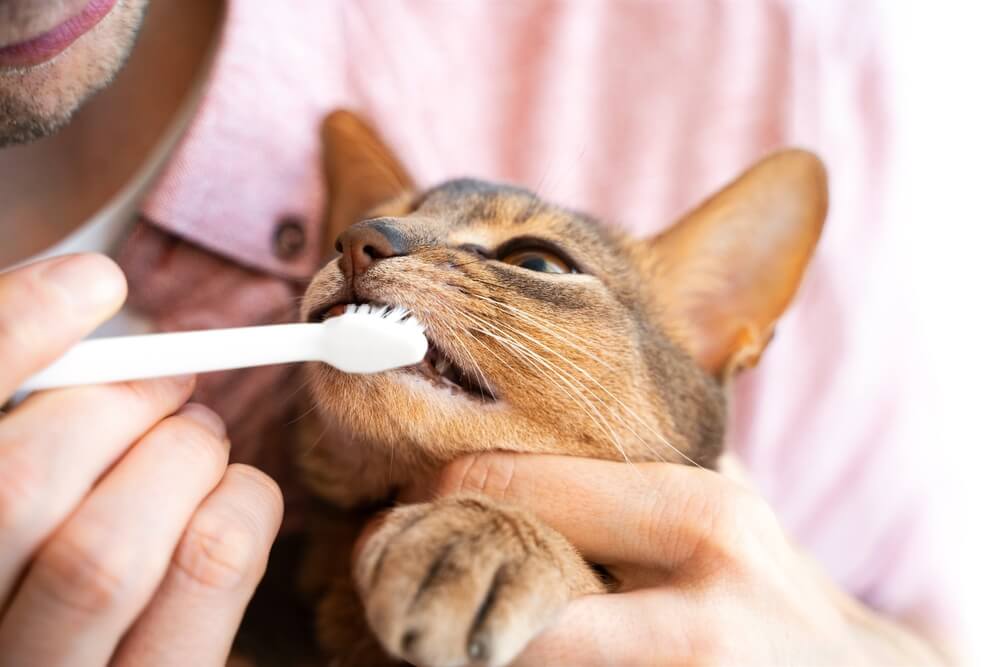
While February is Dental Health Month, caring for your cat’s teeth should be an all-year-round practice. Research has shown that between 50% and 90% of cats have shown signs of dental disease by the time they reach four years of age.
Dental disease is more than just a cosmetic issue and beyond bad breath, it can be really painful for pets. As responsible pet parents, we must prioritize proper dental care, and implement preventative steps to avoid such problems.
That’s why we are here to tell you the ‘tooth’ (sorry) about dental health hygiene including why cats experience dental pain, how you can tell if they are in pain, and what preventative measures to take.
How do I know if my cat’s teeth hurt?
Unfortunately, as pets can’t actually speak to us, it can be difficult to detect when they are in pain. However, there are usually common signs that cats exhibit when they are experiencing dental pain, including:
- Decrease in eating food, especially dry or crunchy food
- Decreased interest in hard treats
- Chewing more slowly than usual
- Dropping food from the mouth while chewing
- Excessive drooling
- Pawing at the mouth
- New or worsening resistance to having the face/mouth touched
- Foul breath
- Visibly loose teeth
- Swelling of muzzle
Why do cats experience dental pain?
Dental pain usually starts with a build-up of plaque that hardens and becomes tartar. If this tartar is not removed, it can lead to painful conditions such as gingivitis where gums become inflamed. Gingivitis can lead to periodontal disease if left untreated and this could cause teeth to fall out which can then lead to a whole array of health issues as your cat will struggle to eat sufficient meals.
Causes of oral pain in cats
Oral problems generally arise from plaque accumulation—a thin film on the teeth housing numerous bacteria. Plaque is formed when saliva, food, and bacteria come together on the surface of the teeth.
While some plaque naturally dislodges during eating or through a cat’s rough tongue, insufficient daily tooth brushing leads to mineralization. This hardening process, fueled by minerals from saliva and gingiva, results in calculus or tartar. The rough surface of tartar becomes a breeding ground for disease-causing bacteria, leading to dental issues.
Does diet affect my cat’s teeth?
There is a common myth that dry food is better for a cat’s teeth but it doesn’t necessarily offer an advantage over wet food. So, if your cat is suited to wet food, don’t worry, you can always offer them a healthy treat that supports their teeth to keep them chewing.
Whether your cat eats wet or dry food, you must take preventative measures as all types of food can get stuck and form a build-up of plaque.
It is however important to feed your cat a nutritious diet that is complete and balanced as well as drinking sufficient water to support healthy teeth and gums just like us humans.
What is the best treatment?
If you think your cat is suffering with their teeth, it’s best to visit the vet for a diagnosis. Depending on the severity of the issue, your vet will likely remove the plaque and in some cases give antibiotics or remove the teeth. Dental issues are usually reversible if caught in time and preventative measures are then carried out to avoid repetitive issues.
Preventing dental problems in cats
The good news is, that your cat’s dental pain can be prevented by ensuring your cat receives regular dental care. At home, you can brush your cat’s teeth daily to remove plaque before it builds up and hardens to tartar.
Of course, your cat will probably put up a fight when they see a toothbrush come near them. If you are struggling, your vet may be able to advise but here are some tips to try in the first instance:
- Select a small, quiet room (where they can’t escape) and where you can place your cat on a surface or sit with them in your lap.
- To build a positive association, dip a cotton swab into something such as tuna water and let your cat taste it before entering the toothbrush.
- Place your cat’s head at a 45-degree angle and gently pull back their lips. The mouth can remain closed.
- For the first few lessons, rub the cotton swab along only a few teeth rather than the whole mouth, especially if your cat is unsure or nervous about the process.
- Once your cat is completely used to you rubbing her teeth with a cotton swab, it’s time to start using a toothbrush.
- Make sure to use pet toothpaste and try to brush each side for 30 seconds, covering all parts of the mouth. [3. https://vcahospitals.com/know-your-pet/brushing-teeth-in-cats#:~:text=Place%20your%20cat’s%20head%20at,accumulates%20and%20gingivitis%20is%20initiated]
Your cat will also need to visit the vet at least once a year to get their teeth examined, then check them in detail yourself once a month as well as daily brushing.
If you take these preventative measures and keep an eye on your furry friend’s dental health, it will keep them smiling well into their elderly years.
We uphold the highest editorial standards when creating the authoritative content pet parents rely on and trust.
Every piece of clinical content on the Cat Food Advisor is reviewed by our certified Veterinary Advisory Board, which consists of licensed veterinarians and medically certified specialists.
Our reviews are completely independent; we are not paid by any pet food company to promote their products favorably. We do not accept money, gifts, samples or other incentives in exchange for special consideration. For more information see our Disclaimer & Disclosure page.




